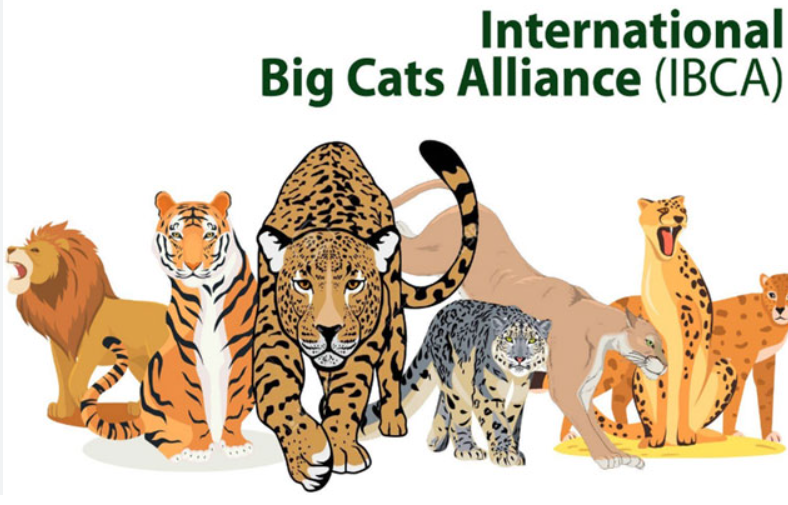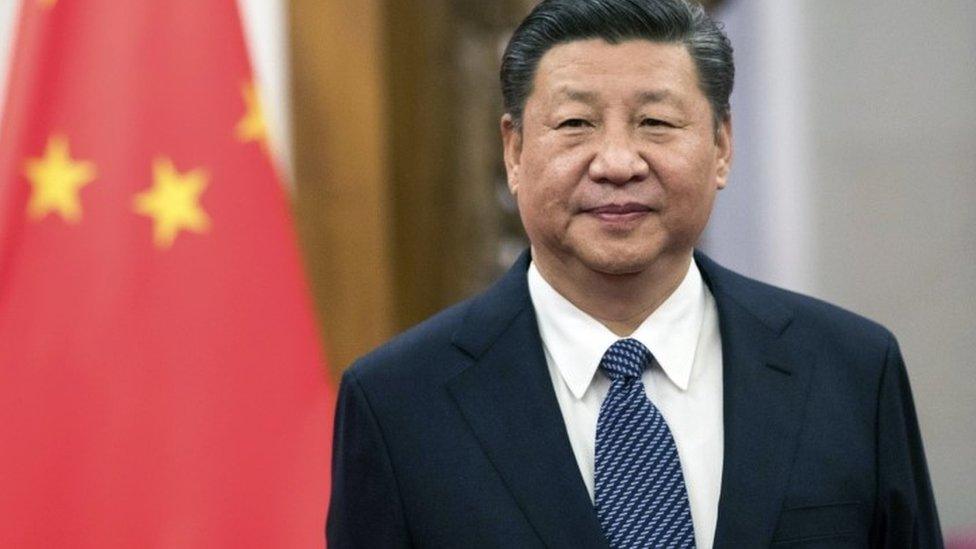- Courses
- GS Full Course 1 Year
- GS Full Course 2 Year
- GS Full Course 3 Year
- GS Full Course Till Selection
- Answer Alpha: Mains 2025 Mentorship
- MEP (Mains Enrichment Programme) Data, Facts
- Essay Target – 150+ Marks
- Online Program
- GS Recorded Course
- Polity
- Geography
- Economy
- Ancient, Medieval and Art & Culture AMAC
- Modern India, Post Independence & World History
- Environment
- Governance
- Science & Technology
- International Relations and Internal Security
- Disaster Management
- Ethics
- NCERT Current Affairs
- Indian Society and Social Issue
- NCERT- Science and Technology
- NCERT - Geography
- NCERT - Ancient History
- NCERT- World History
- NCERT Modern History
- CSAT
- 5 LAYERED ARJUNA Mentorship
- Public Administration Optional
- ABOUT US
- OUR TOPPERS
- TEST SERIES
- FREE STUDY MATERIAL
- VIDEOS
- CONTACT US
International Big Cat Alliance (IBCA) Officially Comes into Force as a Full-Fledged Treaty-Based Inter-Governmental International Organization
International Big Cat Alliance (IBCA) Officially Comes into Force as a Full-Fledged Treaty-Based Inter-Governmental International Organization

Context:
The International Big Cat Alliance (IBCA) has transitioned into a treaty-based, inter-governmental organization(23 Jan,2025), marking a landmark step for the global conservation of big cats. Encompassing Tigers, Lions, Leopards, Snow Leopards, Pumas, Jaguars, and Cheetahs(7), IBCA seeks to tackle poaching, habitat fragmentation, and human-wildlife conflict through a unified and legally binding framework.
Why “Big Cats”?
- Apex Predators & Umbrella Species: Safeguarding them maintains overall ecosystem stability.
- Ecological Domino Effect: Their precipitous decline due to illegal wildlife trade, habitat loss, and human-wildlife conflicts—has a domino effect on ecological equilibrium.
- Illicit Wildlife Trade: Given that illegal trade in wildlife parts (including big cat body parts) is estimated to be a multi-billion-dollar global black market, international cooperation is crucial.
About IBCA
IBCA is a specialized inter-governmental entity dedicated to the conservation and sustainable management of 7 big cat species. It synergizes efforts such as Project Tiger (India), lion conservation in Africa, and puma initiatives in the Americas.
Genesis
-
- The need for IBCA was recognized in the late 2010s followed by multi-country dialogues among key range states;
- The formal launch of IBCA took place in 2023, announced by Prime Minister Narendra Modi.
- It gained full-fledged treaty-based status in 2024, marking a landmark international commitment to safeguard big cats
Purpose
-
- To serve as a central coordinating body for range countries and global conservation partners.
- To create legally binding and effectively implementable guidelines for the protection of big cats.
- Achieve stable or increasing populations of big cat species by 2030 in priority landscapes.
- Encourage transnational collaborations for combating illicit wildlife trade and managing shared ecosystems.
Key Objectives
-
- Foster international cooperation for conservation of big cats
- Enhance knowledge exchange on big cat threats and solutions
- Build capacity of range countries for effective big cat management
- Raise global awareness and promote outreach activities about the importance of seven big cat conservation
- Mobilize resources and explore synergy with International bodies associated with conservation.
Organisational Structure
-
- Assembly of Members:
- Composition: Comprises ministerial-level representatives from each member nation.
- Role: Serves as the apex decision-making body, setting overarching policies, approving major conservation strategies, and allocating budgetary resources.
- Assembly of Members:
-
- Secretariat
- Headquarters: Located in New Delhi, India, reflecting India’s prominent role in tiger conservation.
- Led by a Director-General appointed by the Assembly of Members.
- Role: Manages day-to-day operations, coordinates between various bodies within IBCA, and oversees the execution of policies and programs.
- Standing Committee
- Composition: Includes nominated national focal points from founding member countries.
- Role: Assists in the implementation of the Assembly's decisions and provides guidance on various initiatives..
- Secretariat
IBCA Membership Overview
|
Category |
Member(s) |
Key Facts |
|
Founding Members |
India, Nicaragua, Eswatini, Somalia, Liberia |
These five countries have officially ratified IBCA, bringing it into force as a treaty-based international organization on January 23, 2025.(PIB) |
|
Total Members |
27 countries (as of February 2025) |
These include both founding members and additional countries that have joined. Several international and national organizations working in wildlife conservation are also partners.(PIB) |
|
Target Membership |
97 countries |
The IBCA aims to include 97 big cat range countries that cover the natural habitats of tigers, lions, snow leopards, pumas, jaguars, and cheetahs.(PIB) |
Significance of Treaty-Based Status
- Legal Mandate: As a treaty-based organization, IBCA sets binding directives on habitat preservation, anti-poaching protocols, and data-sharing. Member nations must harmonize their laws with IBCA—similar to CITES.
- Dedicated Funding: IBCA manages a multi-donor trust fund targeting USD 500 million annually, supported by international agencies, philanthropists, and CSR ventures, ensuring steady financing for conservation.
- Coordinated Policy: The IBCA Secretariat can convene urgent sessions to tackle poaching spikes or disease outbreaks, promoting a unified strategy over fragmented national efforts.
- Enhanced Enforcement: Treaty obligations enable real-time intelligence-sharing among INTERPOL, forest departments, and border forces, allowing swift exchange of camera-trap or drone data.
- Unified Global Voice: By consolidating scientific findings and policy advice, IBCA ensures big cat conservation stays front and center in global climate and biodiversity debates.
Current Issues and Challenges
- Habitat Fragmentation
- Over 90% of the historical range of lion populations in Africa has been lost.
- Highways, rail lines, and other infrastructure projects intersect key tiger corridors in Asia.
- Poaching and Illegal Wildlife Trade
- Tigers, lions, and leopards remain prime targets for their body parts, believed to be worth thousands of dollars per unit in illegal markets.
- Ivory, rhino horn, and big cat parts together account for a large chunk of the USD 20+ billion illicit wildlife trade.
- Climate Change
- Snow leopards face habitat shrinkage due to glacial retreats and changing prey distribution in the Himalayas.
- Rising sea levels threaten the Sundarbans—only home to Royal Bengal tigers
- Human-Wildlife Conflict
- An estimated 100–200 human casualties occur yearly in the Sundarbans alone, fuelling retaliatory killings.
- An estimated 100–200 human casualties occur yearly in the Sundarbans alone, fuelling retaliatory killings.
- Financial and Technological Gaps
- Many range countries struggle to maintain adequate camera trap networks or advanced genetic testing facilities.
- Limited budgetary allocations in developing nations hamper the recruitment of wildlife rangers and forest guards.
Current IUCN Status
|
Species |
Scientific Name |
Conservation Status (2025) |
Population Trend |
|
Lion |
Panthera leo |
Vulnerable(african) Endangered(asiatic) |
Declining |
|
Tiger |
Panthera tigris |
Endangered |
Declining |
|
Leopard |
Panthera pardus |
Vulnerable |
Declining |
|
Jaguar |
Panthera onca |
Near Threatened |
Declining |
|
Snow Leopard |
Panthera uncia |
Vulnerable |
Declining |
|
Cheetah |
Acinonyx jubatus |
Vulnerable |
Declining |
|
Cougar/Puma |
Puma concolor |
Least Concern |
Stable |
Case Studies
- Project Tiger (India): Launched in 1973, now featuring around 57 reserves across 75,796 sq. km, holding 3,682 tigers (2022).
- Gir Lion Conservation (India): Asiatic lion numbers grew from 359 (2005) to 674 (2020), showcasing successful local engagement.
- Amazon Jaguars (Brazil): Jaguar ranges have shrunk by ~40%; corridor-based conservation remains a priority.
- Nepal-India Tiger Collaboration: Joint monitoring and patrolling boosted Nepal’s tiger count from 121 (2009) to 355 (2022).
Way Forward
- Trans-boundary Corridors
- Member states should identify core and buffer zones for ecological connectivity.
- Coordinating large-scale projects (e.g., roads, rail lines) to include wildlife underpasses or overpasses can reduce conflict and habitat segmentation
.
- Community-Centric Models
- Implementing insurance schemes or compensation funds for livestock losses can mitigate retaliatory killings.
- Sustainable eco-tourism models can generate livelihood opportunities—e.g., homestays, guiding, and cultural tours.
- Technological Advancements
- Camera Trap Standardization: Encouraging uniform protocols for population surveys.
- Satellite-Based Tracking: Using GPS collars and drones to monitor habitat use and movement patterns.
- Genetic Analysis: Collaborating with research institutes to ensure healthy gene pools, especially in isolated populations.
- Policy Harmonization
- Aligning national wildlife laws with IBCA’s regulations—similar to the structure under CITES—will strengthen anti-poaching and trade control measures.
- Aligning national wildlife laws with IBCA’s regulations—similar to the structure under CITES—will strengthen anti-poaching and trade control measures.
- Capacity Building
- Regular training workshops for forest rangers, community scouts, and local administrations in hotspot areas.
- Joint research programs that allow scholars from developing nations to collaborate with established wildlife research centers.
- Long-Term Financing
- Seek philanthropic, corporate, and multi-lateral funding to sustain efforts
- Seek philanthropic, corporate, and multi-lateral funding to sustain efforts
Conclusion
By achieving treaty-based status on 23 January 2025, the International Big Cat Alliance (IBCA) has solidified its global mandate to safeguard these iconic predators. With clear legal frameworks, robust funding channels, and collaborative action, IBCA is poised to revitalize big cat populations while ensuring the broader ecosystems they anchor remain vibrant and resilient.
|
Also Read |
|
UPSC Foundation Course |
|
| CSAT Foundation Course | |




